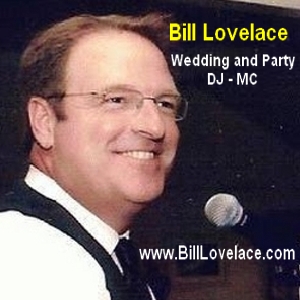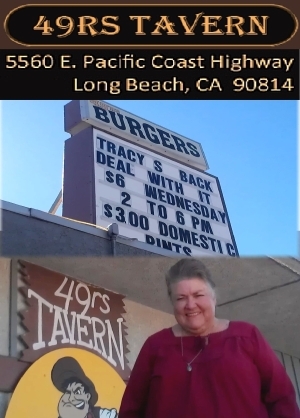LBTransit is currently finalizing its "Systemwide Transit Analysis and Reassessment" (STAR) plan to expand transit routes and increase bus service. In a possibly unintended but relevant consequence of this, the STAR plan could sweep areas into minimum allowable housing height and density levels under SB 827 (if Sacramento enacts it.)
LBREPORT.com provides below a LBTransit DRAFT map, screen-saved from a LBTransit online video, with red-lined routes indicating the high-intensity corridors that LBTransit's 
Source: DRAFT map is screen-save from LBTransit video
For comparison/reference, below is LBTransit's current service map:

Source: Screen-save from LBTransit video
Sponsor | Sponsor |
As of dawn Jan. 26, LBTransit hadn't put maps on its website showing the public exactly where it's considering its transit increases. Instead, it's held a number of "community meetings" at which it's displayed versions of various maps and sought public responses. The final "community meeting" in the series is scheduled for Saturday, Jan. 27 at NLB's Michelle Obama Neighborhood Library, 10 a.m.-noon.
UPDATE: Jan. 26, 10:55 a.m. LBTransit PIO Paul Gonzales (at our request) provided LBREPORT.com with two PDF files of the DRAFT maps. "They must be identified as DRAFT as Long Beach Transit is still in the public comment phase and they could change. These are the maps people can see and comment on at Saturday's public meeting."
LBREPORT.com provides links to these materials below (without having independently reviewed them at this point.)
- DRAFT Route maps (pdf)
- DRAFT System maps (pdf) [end 10:55 a.m. UPDATE]
Asked about the impacts of SB 827, an LBTransit PIO Gonzales told LBREPORT.com -- and reiterated several times -- that LBTransit's "STAR" plan has been in development since 2016 and is separate from and unrelated to SB 827. And in a Jan. 26 email (accompanyig transmittal of the DRAFT materials above), Mr. Gonzales reiterated: "There is no linkage between the STAR Initiative and any proposal under consideration by any legislative body."
But regardless of LBTransit's stated intent, the plain verbiage of SB 827 means that LBTransit's plan now carries significant potential density and building height consequences for surrounding neighborhoods.
SB 827 provides in pertinent parts:
Sponsor |  |
SB 827's locally preemptive mandates state:
(b) Notwithstanding any local ordinance, general plan element, specific plan, charter, or other local law, policy, resolution, or regulation, a transit-rich housing project shall receive a transit-rich housing bonus which shall exempt the project from all of the following:
- (1) Maximum controls on residential density or floor area ratio.
- (2) Minimum automobile parking requirements.
- (3) Any design standard that restricts the applicant's ability to construct the maximum number of units consistent with any applicable building code.
- (4) (A) If the transit-rich housing project is within either a one-quarter mile radius of a high-quality transit corridor or within one block of a major transit stop, any maximum height limitation that is less than 85 feet, except in cases where a parcel facing a street that is less than 45 feet wide from curb to curb, in which case the maximum height shall not be less than 55 feet. If the project is exempted from the local maximum height limitation, the governing height limitation for a transit-rich housing project shall be 85 feet or 55 feet, as provided in this subparagraph.
(B) If the transit-rich housing project is within one-half mile of a major transit stop, but does not meet the criteria specified in subparagraph (A), any maximum height limitation that is less than 55 feet, except in cases where a parcel facing a street that is less than 45 feet wide from curb to curb, in which case the maximum height shall not be less than 45 feet. If the project is exempted from the local maximum height limitation, the governing height limitation for a transit-rich housing project shall be 55 feet or 45 feet, as provided in this subparagraph.
(C) For purposes of this paragraph, if a parcel has street frontage on two or more different streets, the height maximum pursuant to this paragraph shall be based on the widest street.
Sponsor | Sponsor |
LBTransit's webpage includes a "fact sheet" that says "the project team has prepared transit recommendations on LBT's future routes and services [including]...Bus service every 15 minutes, 7 days a week on major streets..." LBTransit has discussed its plan in some "community meetings" [including Signal Hill/Jan 16; El Dorado Park/Jan. 17; Silverado Park/Jan. 20] with one meeting remaining at NLB's Michelle Obama Neighborhood Library on Saturday, Jan. 27, 10 a.m.-noon.
LBTRansit's "STAR" webpage says: "At your community meeting, you'll learn about our final recommendations and our roadmap on LBT’s future services and what that means for you. In Phase 2 of the STAR Initiative, you saw the alternatives, you gave us your feedback and we heard you. Now, we need your input on our proposed transit improvements."
As of dawn Jan. 26, we see no mention of SB 827 (introduced Jan. 3, 2018) on LBTransit's website and it's unclear if members of the public commenting to date on LBTransit's plan were aware that its contemplated changes could have density/building height impact on their neighborhoods.
On Jan. 4, 2018, LBREPORT.com reported on SB 827 here and reaction to it here. LBREPORT.com noted that on December 13, 2017, Sen. Wiener wrote the following on his Facebook page:
We need to do better building housing that is neither high-rise nor extreme low density (like single family) - basically, smaller apartment buildings in what are currently low density areas. This "missing middle" housing makes a big difference - allowing lower-cost density near transit while retaining a neighborhood's human scale. Smart zoning adjustments to low-density neighborhoods to allow this kind of housing will go a long way toward making housing more affordable and sustainable. [Comemnts on aDec. 9 Washington Post article.]
SB 827 drew swift opposition from L.A. City Councilman Paul Koretz, quoted on LATimes.com (at this link as calling the bill "devastating," "insanity" and "the worst idea I've ever heard," adding "I would have a neighborhood with little 1920s, '30s and '40s single-family homes look like Dubai 10 years later." Koretz also said [attributed in Times text] that SB 827 would lead to an increase in new home building that would snarl traffic and go against what his constituents want in their neighborhoods. [end Times text]
To LBREPORT.com's knowledge, no incumbent Long Beach Councilmember has publicly opposed SB 827 to date or agendized it for a City Council advocacy position. On
Developing.
blog comments powered by Disqus
Recommend LBREPORT.com to your Facebook friends:
Follow LBReport.com with:
RSS |
Contact us: mail@LBReport.com





Hardwood Floor Specialists
Call (562) 422-2800 or (714) 836-7050
